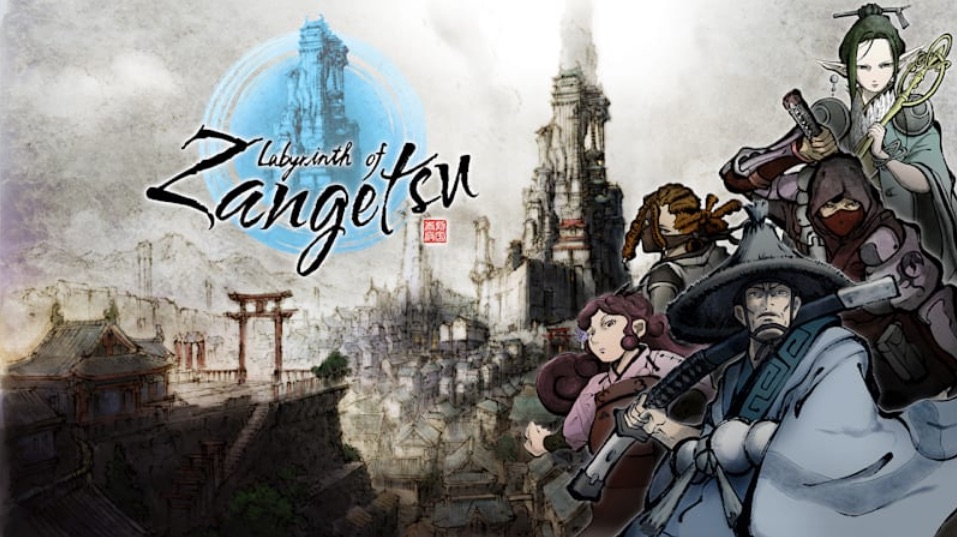
Labyrinthine dungeon crawlers have a very specific appeal that caters to a very hardcore crowd. These are games where players explore mazes in first-person in tile-based movement. There are traps, stat checks, and a lot of freedom to customize a party- but no matter what, always expect a jaunt through these dungeons to be a war of attrition.
What makes Labyrinth of Zangetsu unique from other dungeon RPGs? Is it the striking calligraphic and inky art style that makes it stand out? The emphasis on the Edo period (or in this case “Ido”) Japanese folklore and myths do make this dungeon crawler different and its relentlessly bleak ambiance does give it personality.
What can hardcore RPG maniacs expect from this Acquire and KaeruPanda joint? Do you think you have the stamina and fortitude to survive the Labyrinth of Zangetsu?
Labyrinth of Zangetsu
Developer: Acquire, KaeruPanda Inc.
Publisher: Acquire, PQube
Platforms: Windows PC, PlayStation 4, Nintendo Switch (reviewed)
Release Date: April 20, 2023
Players: 1
Price: $29.99 USD
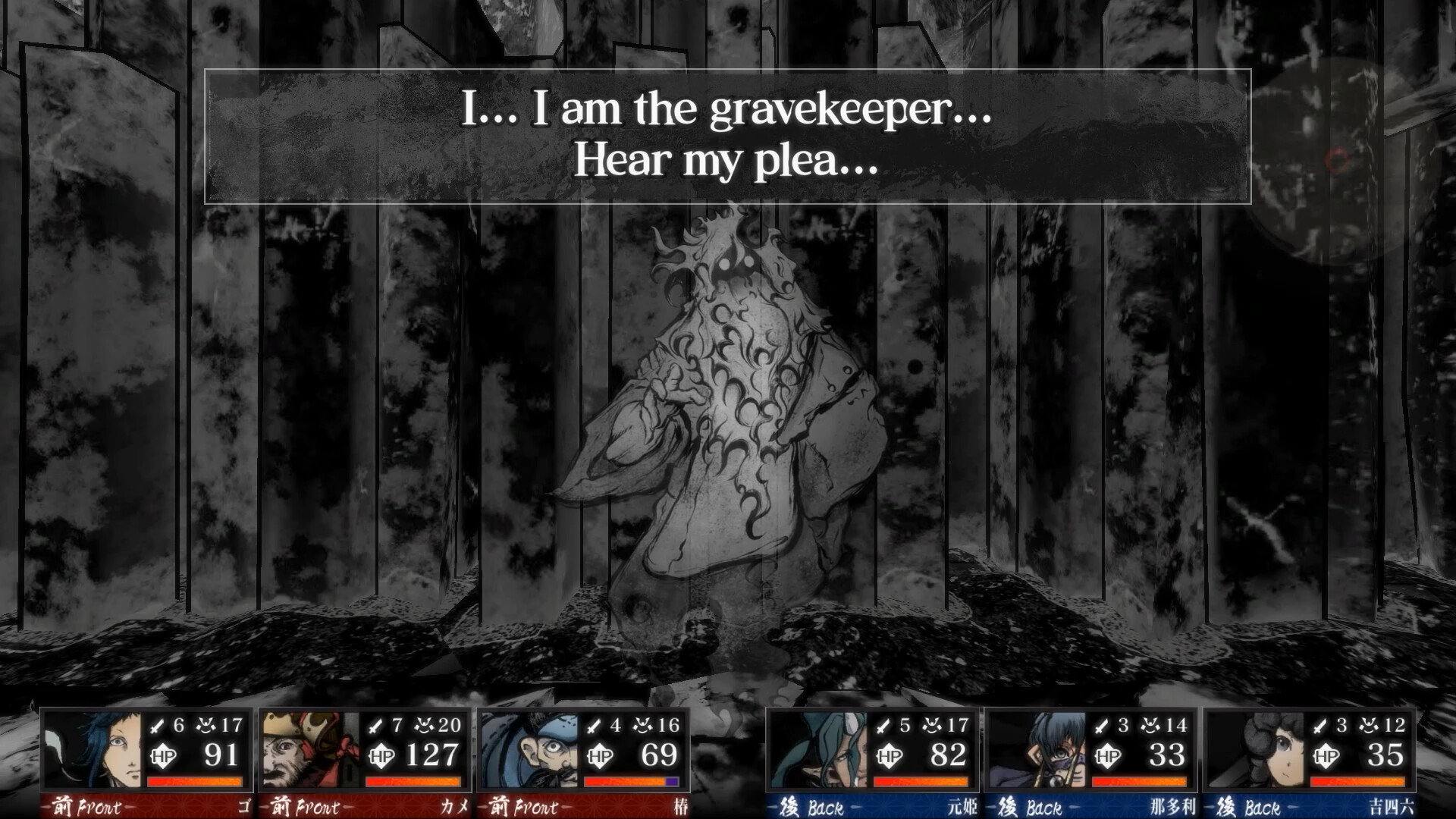
Labyrinth of Zangetsu is a very bleak game; more so than most examples of other games in this genre. From the first screen, it is evident that the “Ido” period is like a more hellish medieval era where there is a black ink plague that turns men into abominations and demons walk the Earth.
All hope is lost and what is left is the last bastion of men on a holy mission to drive back the cursed ink. Men, elves, and even demons are willing to work together to thwart this unholy menace. It does not matter how evil or good the warriors are; everyone is willing to volunteer to fight back because they are dead if they don’t.
Labyrinth of Zangetsu does not have much in terms of characters or plot. Beyond the premise of thwarting the abstract evil force of nature by going deeper and deeper into the labyrinth, there is nothing to latch onto. This is a very old-school RPG design philosophy that was established by the Wizardry games and Labyrinth of Zangetsu is seemingly aiming to be a spiritual successor.

After the Ido Empire’s general lays out the premise, it is on the player to assemble a party of conscripts. These poor devils are all there is to get emotionally invested in since there is no legitimate protagonist. Conscripts can be anything the player wants and have a large range of customization.
Race, job class, and alignment are selected but started stats are decided upon from a dice roll. Rerolling is an option so the purpose of rerolling is questionable since there is no limit. Some classes work better with certain alignments like evil or neutral characters make better ninjas or good alignment for clerics. A party can have up to six conscripts and though it is possible to have fewer, you will want to have a full party.
Battles are turn-based and are done in the classic first-person dungeon-crawler style. There is hardly any animation apart from the enemy’s idle motion and the effects of attacks. The player’s party is only represented as station portraits and a stat sheet, and that is all. Labyrinth of Zangetsu is the kind of RPG that requires a bit of imagination on the player’s part.
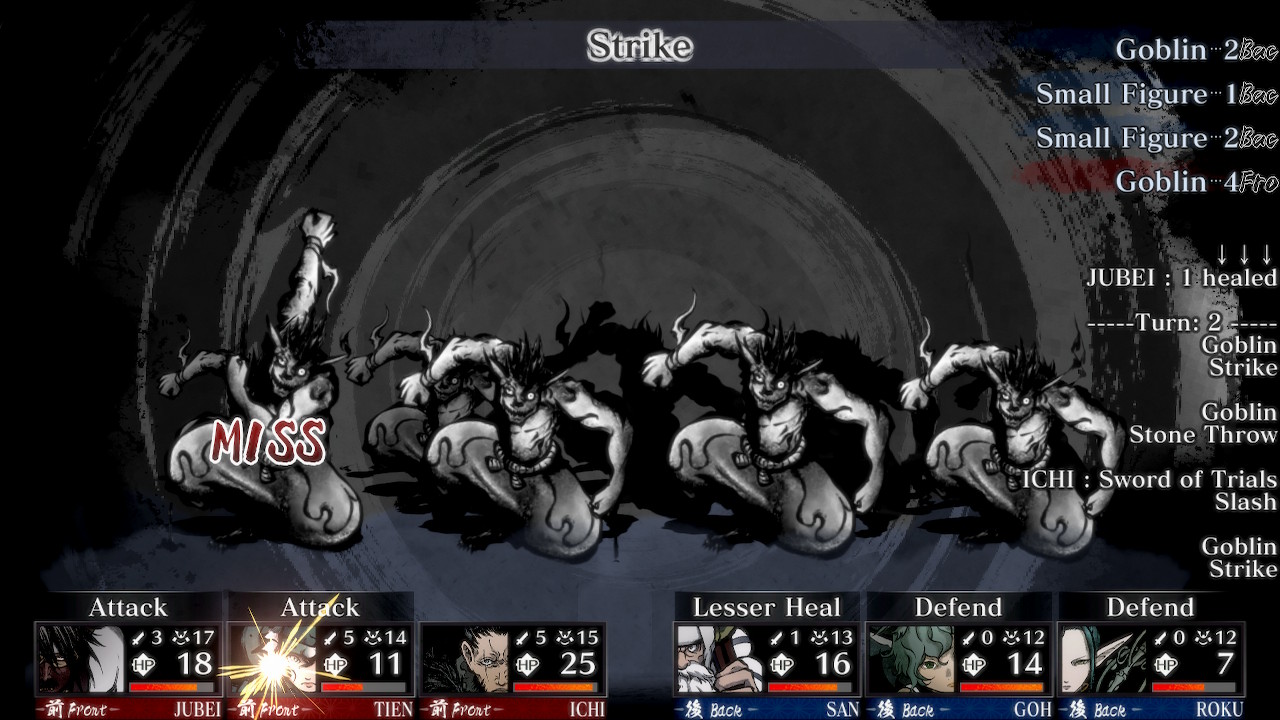
The battle system is easy to understand and the interface graphics are cleanly laid out. There is never any mistaking of what is happening and pertinent information is accessible. It may not look like much, but this system is effective and efficient. Battles come and go quickly and no time is wasted- it is almost as if the game is embarrassed to have turn-based combat and is trying to quickly rush the player along.
The main gimmick that makes Labyrinth of Zangetsu stand out is the front and back row mechanics. This means whoever is in the front three spots is the main offense and the three units in the back are active support or ranged. Anyone in the back row won’t be able to use physical combat and will have to rely on magic. This makes it so making a team of just brute force will result in wasted spots in the team.
Having a diverse party of different kinds of fighters and magic users is the staple of any RPG. There is almost no limit to how the party is made and this is how gamers will likely become attached to them. This makes it all the more painful if or when anyone dies- and when somebody dies, it is intensely punishing.
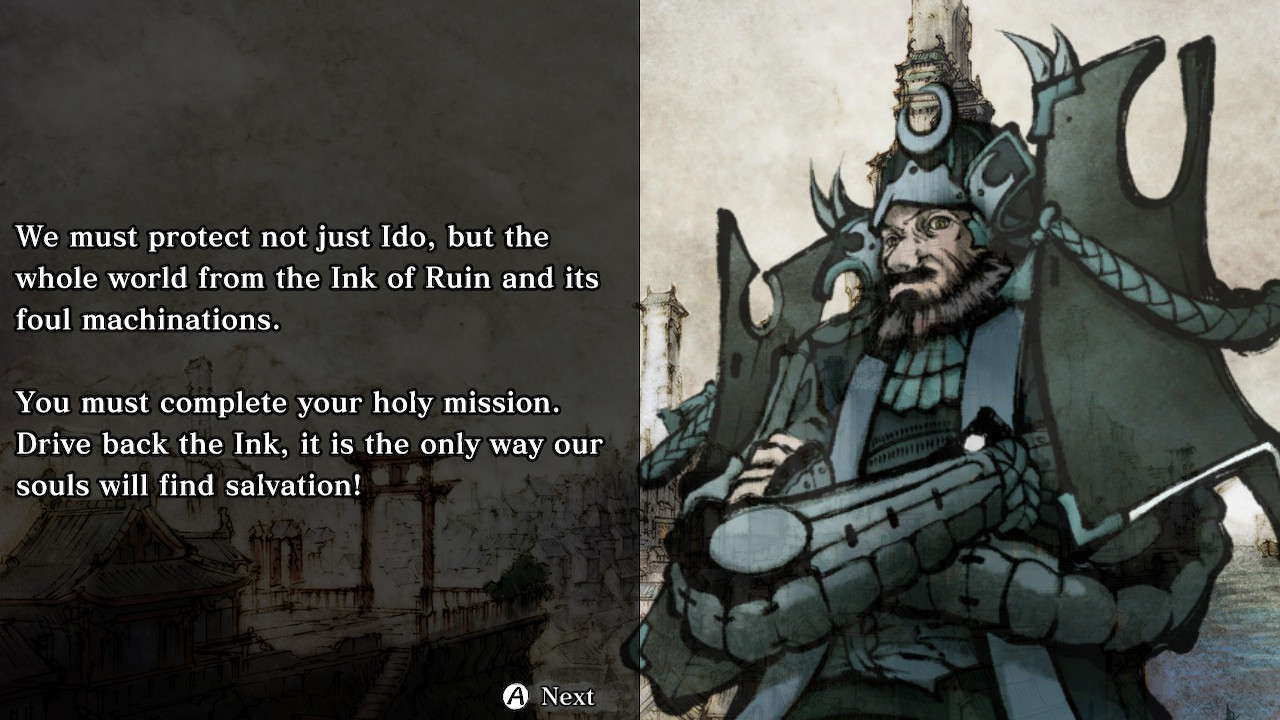
Death in Labyrinth of Zangetsu can be permanent for characters, but there is a chance of resurrection depending on some variables. It is very possible to barely survive a boss battle, leaving one man in critical condition and five corpses to drag around. Moments like these are the real stories of Labyrinth of Zangetsu– emergent and stressful situations where survival hangs by a thread.
It is very possible to also become utterly crippled with low resources and not enough conscripts to fill out a complete party. New conscripts begin at level one and gamers will find themselves grinding in the intro stages of dungeons to get their fresh meat in a comparable state as their lucky mainstays.
Some units may survive a long time before dying or succumbing to corruption, only to be replaced with new guys who will or may not endure the same fate one day. The experience feels like many smaller victories that lead up to terrible disasters and having to pick up the pieces to carry on the cycle, like a constant tug of war.
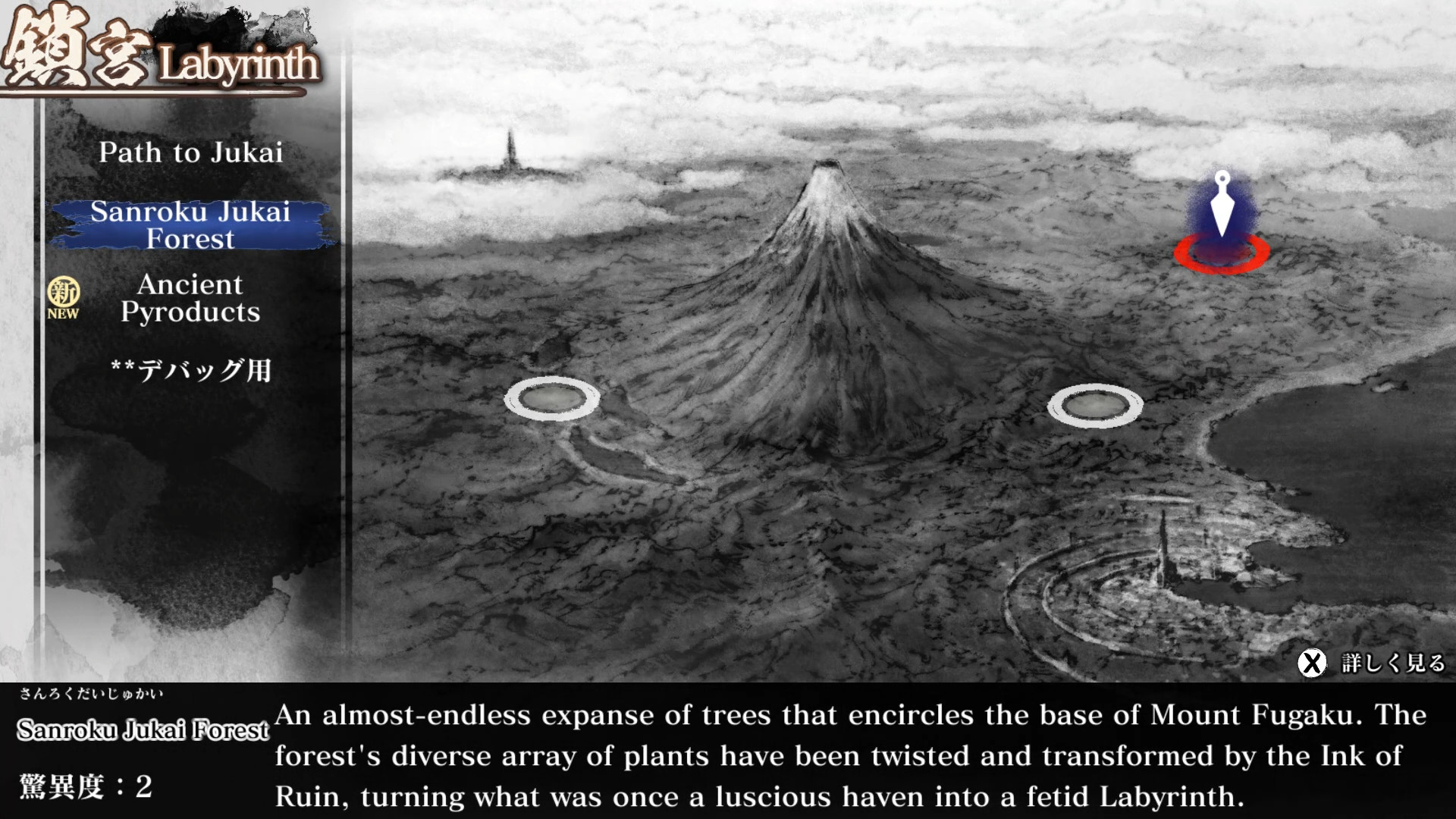
The dungeons are tile-based and always in first person. There is a lot of exploration and a stealth mechanic to avoid encounters. The labyrinths have logical layouts and are not chaotic messes. There are mechanisms and traps to avoid. It almost feels like a nightmarish funhouse at times.
The most notable feature of Labyrinth of Zangetsu would be its visual style. The graphics go for an ink-brush aesthetic that was common in traditional Japanese art. There is a roughness to the brush strokes that adds a lot of grit and dirtiness to the atmosphere. This is fitting since the tone of the setting is very brutal and the chaotic and ruggedness of the line art matches the game’s difficulty.
There is a drawback to the art style in Labyrinth of Zangetsu and it is that it lacks variety. The artists are adamantly dedicated to the ink brush-look and after a while, the visuals become exhausting and boring to look at. This is a very gray game and colors are sparingly used; mostly for UI elements or blood.
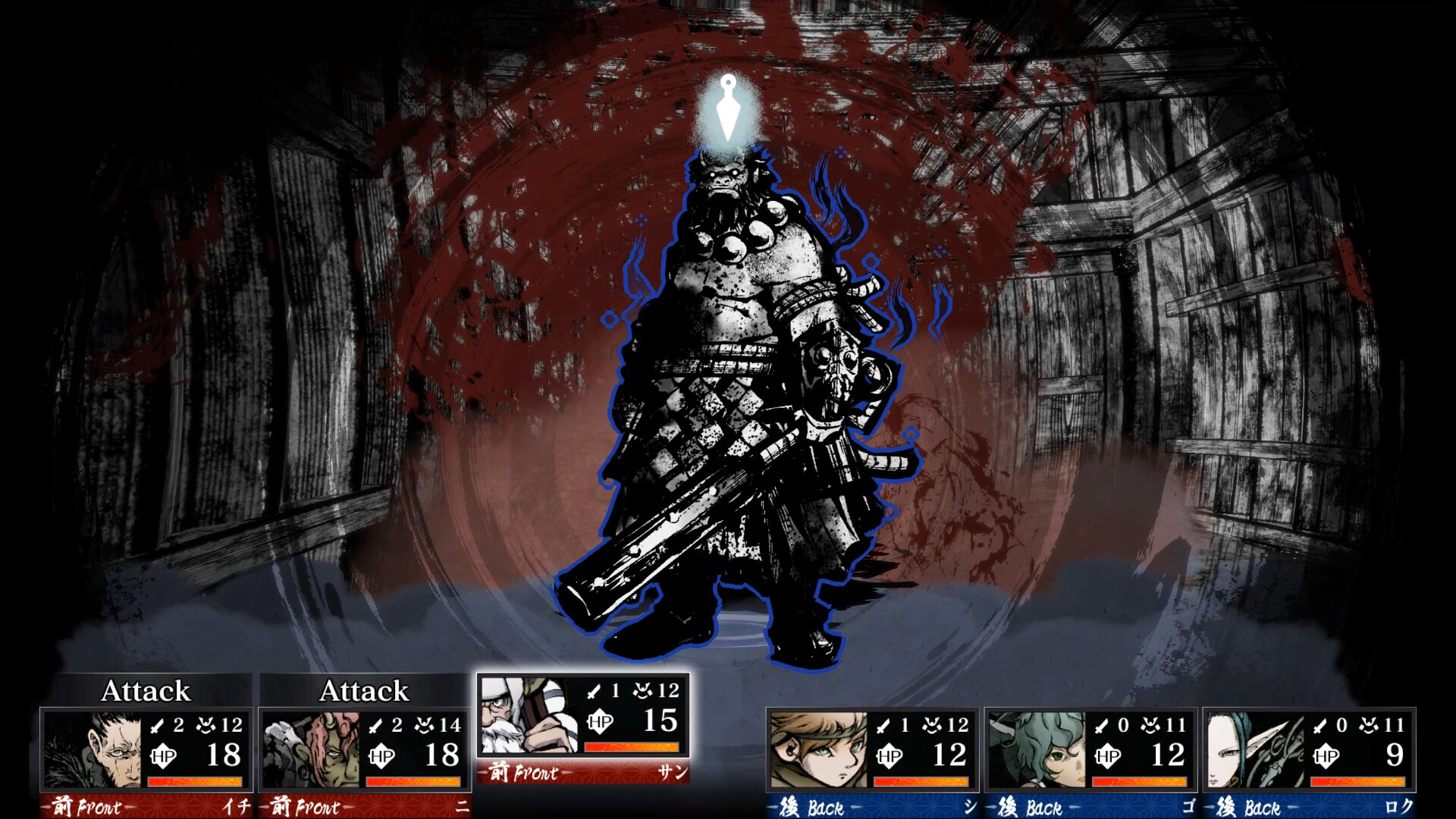
Labyrinth of Zangetsu is a game for a very specific niche. This is one for the Wizardry fans and Etrian Odyessy maniacs. There is not much in terms of world-building since the environments are made up of tiles and there is no emotional core aside from the one the player imagines.
The visuals are unique, but it is hard to be satisfied with static jpegs with no expression. The presentation is not as bare bones or minimalistic as something like Dungeon Encounters, but it still isn’t as impressive or lavish as a Vanillaware production.
Labyrinth of Zangetsu is a profoundly stressful, but admittedly exciting experience. This is a very hardcore RPG that throws you into the deep end. Merely making it out alive feels like an accomplishment and you will feel the sting of loss when your favorite unit dies, over and over.
Labyrinth of Zangetsu was reviewed on Nintendo Switch using a copy provided by PQube. Additional information about Niche Gamer’s review/ethics policy can be found here. Labyrinth of Zangetsu is now available for Windows PC (via Steam), PlayStation 4, and Nintendo Switch.